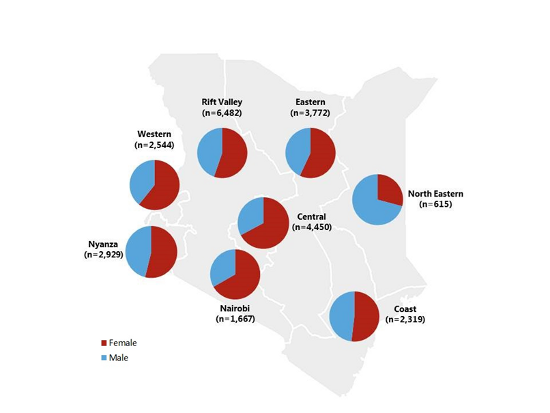Caregiver responsibilities
Upon completion of health professional education studies, graduates may still face gender discrimination as they seek jobs and enter the labor market. While the 2012 systematic review did not focus on gender discrimination issues outside the institutional setting, it is hypothesized that deployment patterns for women may relate to family and pregnancy responsibilities, marriage possibilities, and proximity to family.
Suggested data analyses
Sex- and age-disaggregated analyses to better consider potential gender-related challenges of deployment, such as:
Distribution of Public Sector Health Workforce by Sex and Province in Kenya, 2010

Source: Newman et al. 2011
The map above shows a larger proportion of female health workers in Nairobi and the Central province, while a larger proportion of male health workers are in the North Eastern province, the country’s poorest region with the fewest health workers. While the underlying reasons for regional gender differences in health workers were not explicitly researched, they could relate to female health worker preferences to accept urban posts due to security and caregiving responsibilities.
See also the graph of Cameroon’s health workforce by age and sex under the faculty Job Satisfaction and Retention section.
Qualitative research, surveys, focus group discussions, or other special studies with health professional graduates can help you to understand the underlying factors and dynamics contributing to challenges at deployment and into employment, and whether gender discrimination prevents male and/or female graduates from successfully entering and remaining in the workforce.
Ask Yourself:
|
Please refer to the companion health workforce gender advocacy tool on promoting gender equality in the health workforce for additional descriptions, examples, and resources for the health workforce.


